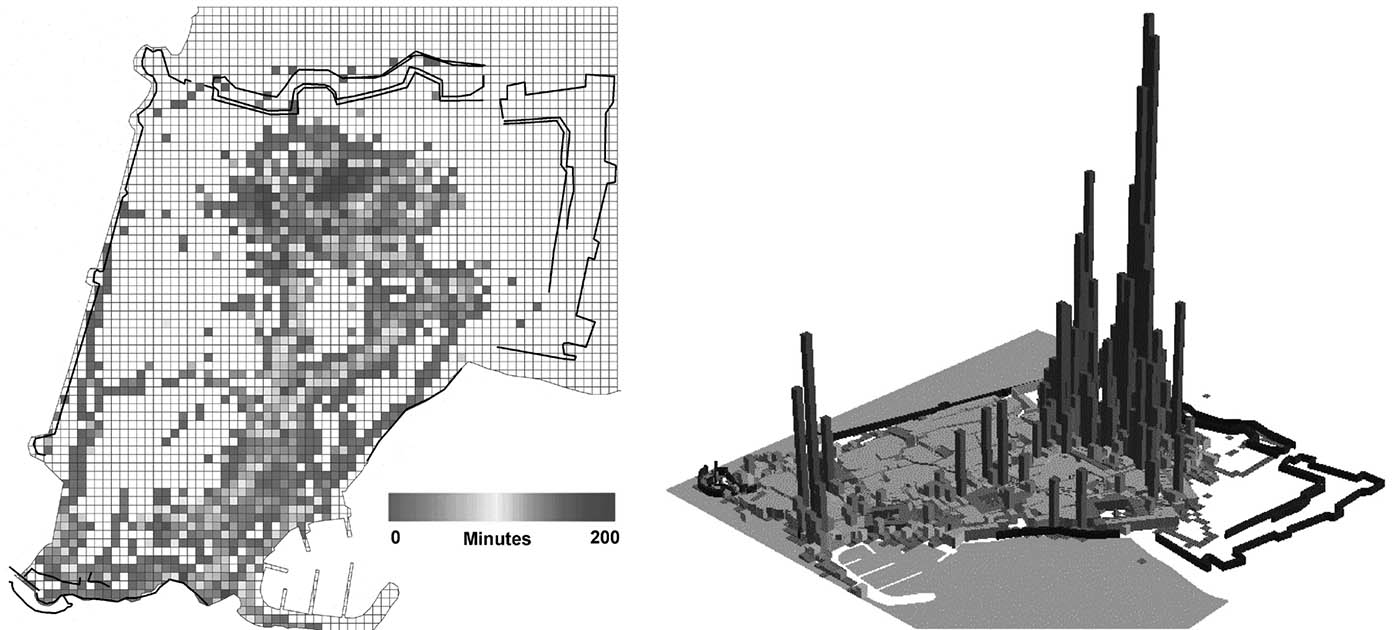Downloads
DOI:
https://doi.org/10.7480/rius.1.193Abstract
Shoval introduces us to the world of GPS tracking and presents two cases in which he used GPS-obtained data for his research on the outdoor mobility of elderly people with cognitive disorders and research on the user-density of an Israeli heritage site.
The first case relates to the sophistication of a location kit that is used to collect data for research focusing on the outdoor mobility of elderly people with cognitive disorders. This kit enables the researchers to measure not just the time-space activity of the research subjects, but also the level of their participation in the study.
The second case relates to the ability to 'pixelating' environments using the high-resolution nature of the GPS-obtained data.
How to Cite
Published
Issue
Section
License
Copyright (c) 2008 Noam Shoval

This work is licensed under a Creative Commons Attribution 4.0 International License.
References
Curry, M. R. (1997) The Digital individual and the Private Realm, Ann als of the Association of American Geographers, 87, pp. 681-699.
Curry, M R (2000) The power to be silent testimony, identity, and the place of place. Historica/Geography 28, pp. 13-24.
Fisher, P. and Dobson, J. (2003) Who knows where you are, and who should, in the era of mobile geography, Geography, 88(4):331-337.
Foroohar, R. (2003) The all-seeing eyes; new mobile phones can find almost anything, including you, Newsweek, 15 December.
Kaplan, E.D. (1996) Understanding GPS, Principles and Applications, Artech House, Norwood MA.
Levy, S. (2004) A Future with Nowhere to Hide? Newsweek June 7-14, 81.
Lyon, D (2001) SurveiUance Society Monitoring everyday life. Buckingham, Open University Press.
Murakami, E. and Wagner, D.P. (1999) Can using global positioning system (GPS) improve trip reporting? Transportation Research C, 7(2) 149-165.
Quiroga, C.A. and Bullock, D. (1998) Travel time studies with global positioning and geographic information systems, an integrated methodology, Transportation Research C 6(1L 101 -127.
Renenger, A. (2002) Satellite tracking and the right to privacy, Hastings Law Jouma/ 53, 549-565.
Ratti, C. Pulselli, R.M., Williams, S. and Frenchman, D (2006) Mobile Landscapes, using location data from cell-phones for urban analysis, Environment and Planning B 33(3L 727-748.
Shoval, N. and lsaacson, M. (2006) The application of tracking technologies to the study of pedestrian spatial behaviour, The Professional Geographer 58(2). 172-183.
Shoval, N. (2008) Tracking Technologies and Urban Analysis, Cities, 25(1) 21-28.
Zhao, Y. (1997) Vehicle Location and Navigation Systems, Artech House, Norwood MA.
Zito, R., D'este, G. and Taylor, MAP. (1995) Global positioning in the time domain, how usefula tool for intelligent vehicle highway systems? Transportation Research C 3(4), 193-209.




